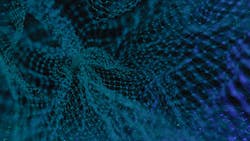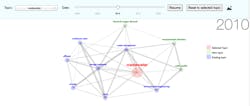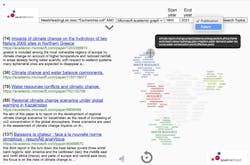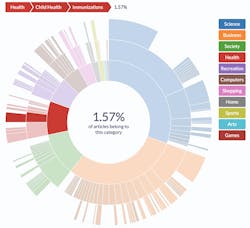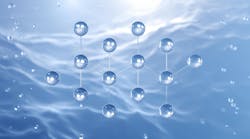The volume and diversity of data, coupled with rapid scientific progress and technological development today have paved the way for a new for water management and sustainability. UNESCO’s International Research Center on Artificial Intelligence (IRCAI) is working to provide the water sector with an online Water Observatory using open data sources on water events, including floods or water contamination.
The platform was built at the Jozef Stefan Institute in the Republic of Slovenia. Part of the European Commission’s Smart Water project NAIADES, which supports the digitization of Europe’s water sector, the Water Observatory is the product of a collaboration between water technology experts and water sector stakeholders. Recently made available for the public, the resource includes a variety of interactive data visualization dashboards configured to water topics and events worldwide.
The platform is an AI-based system that provides users with different views based the nature and scope of the data they are looking for.
One view, labeled “Indicators,” shows the progress of several water-related metrics over time, through an animation presenting global indicators. The view also shares curated, open-source data on regional information about topics and metrics of interest.
The “Media” view shares a worldwide news feed, alongside a Twitter feed. The feeds are based on multilingual text mining technology, configured to identify specific water topics useful for awareness and best practices. A user can also filter their feeds to specific locations, topics, and other indicators.
A “Resources” view can share historical and current geographic data — from local weather to water levels to the potential impacts of climate change. The platform also helps users explore published scientific articles and technological patents. It searches over 126 million articles, and then shares trends or insights for similar topics.
Different Uses for Different Users
The Water Observatory was designed to accommodate the countless different workflows and priorities of the water sector’s shareholders. Water resource managers are using the information generated by the platform to understand how their actions are perceived by consumers and to explore success stories for similar cases.
Local policymakers can use the system to support evidence-based decision-making, helping them better align with European guidelines such as Sustainable Development Goal 6, and evaluate commitments in time.
Because the platform’s data visualization modules are open to the public, it can also be used in schools to complement education on water sustainability, or by concerned citizens wishing to stay informed on global water topics.
In general, the platform’s continuous feed of water-related data can help stakeholders have a wider perspective on their own water resources and feel better prepared for future challenges.
Real-World Applications
The continuous observation of water-related events can help water sector stakeholders develop a wider perspective on their own water resources and usage, and on how to properly address certain water events.
During the past two years, the NAIADES team has worked with the public water companies of the coastal cities of Alicante in Spain and Braila in Romania, as well as the municipality of Carouge in Switzerland, to develop their platform. They were able to cater the platform’s data management directly toward the group’s main priorities of wastewater and water contamination.
Because the Water Observatory’s data management system is so flexible, the NAIADES team hopes that other discussions on user priorities will help them continue refining the data that the platform presents.
For example, the team collaborated with UNESCO’s Chair on Water-related Disaster Risk Reduction to build a Global Landslide Observatory. This platform will offer data geared specifically toward floods and related water events, extrapolating from the Water Observatory’s initial design.
In Carouge, the municipality hopes to improve its water usage and promotes responsible water consumption as part of its commitment to sustainable use of natural resources. For this municipality, the Water Observatory can be an excellent tool: it can emphasize the importance of water management, highlight issues with a direct local impact (such as groundwater contamination due to agricultural waste or scarcity due to drought), and explore similar challenges and solutions shared by other cities.
Like the surrounding region, Carouge receives most of its drinking water from Lake Leman — one of the biggest reserves of freshwater in continental Europe. Downstream of the lake, its water is crucial for the life of millions of people living along the Rhone River down to the Mediterranean Sea: for agriculture, drinking, and cooling water. For this reason, water contamination is a significant concern.
The Water Observatory can find countless biomedical articles on specific contamination issues and similar scenarios, while also presenting reliable solutions. The platform’s published research review capabilities can also be filtered and adjusted easily: the movement of a target through automatically generated subtopics can reorganize or narrow any search results.
Users also benefit from a similar exploration across news articles — allowing the user to estimate the impact of the problem based on similar events happening in other parts of the country and worldwide, while also viewing historically similar events in Carouge.
Another example of the NAIADES Water Observatory is its specific uses for wastewater monitoring and altering. The platform’s social media views can be configured to see any current water discharge and flood events, and can set up alarms based on the strength of public responses.
Data-centered services, like the Water Observatory, can greatly improve business intelligence. For the water sector, this data is a vital resource for preparedness, awareness, and outreach. WW
Published in WaterWorld magazine, March 2022.
